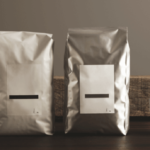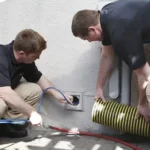Three Major Benefits Of Custom Pre Roll Boxes
Without a question, as time goes on, packaging trends change, and as a result, boxes come in various sizes and forms depending on the product.
 Three Major Benefits Of Custom Pre Roll Boxes
Three Major Benefits Of Custom Pre Roll Boxes
 7 Ways to Navigate to the Closest Grocery Store
7 Ways to Navigate to the Closest Grocery Store
 Smith Machine Squat Death Full Video
Smith Machine Squat Death Full Video
 Google Snake Game Mods
Google Snake Game Mods
 Benefits of Bagged Packaged Goods for Small Businesses
Benefits of Bagged Packaged Goods for Small Businesses
 Three Ways to Get Driving Directions to Grocery Store
Three Ways to Get Driving Directions to Grocery Store
 Business Write For Us
Business Write For Us
 Bottled and Jarred Packaged Goods - Advantages and Disadvantages
Bottled and Jarred Packaged Goods - Advantages and Disadvantages
 Review: Is iBomma a Legitimate Website ?
Review: Is iBomma a Legitimate Website ?
 Air Duct Cleaning Houston Speed Dry USA
Air Duct Cleaning Houston Speed Dry USA
Without a question, as time goes on, packaging trends change, and as a result, boxes come in various sizes and forms depending on the product.
Finding the nearest grocery store can be challenging if you’re unfamiliar with an area, so this post will help you navigate to the closest grocery
In a recent video, a woman is slumped lifelessly on the floor after a smith machine squat. The video was uploaded to YouTube, and the
Google Snake is one of the many games on the market that allows you to play with various Mods. If you want to get the
Bagged packaged goods are made extra durable to protect the product inside. They are an environmentally friendly option that fits the needs of small businesses
Trying to figure out driving directions to grocery store can be a hassle, but luckily there are several good options. These services include Google Maps,
If you want to earn money online, consider writing for legitimate websites. Business Write For Us is a legitimate website that publishes articles about business,
Bottled and jarred packaged goods have several advantages and disadvantages. Let’s look at their costs, durability and eco-friendliness. Which is best for you? Here are
You can download pirated movies, TV series and music from the ibomma website. While it is illegal to download movies from the website, it does
There are many options out there when it comes to Air Duct Cleaning Houston Speed Dry USA. Houston Speed Dry uses a thermal imaging camera